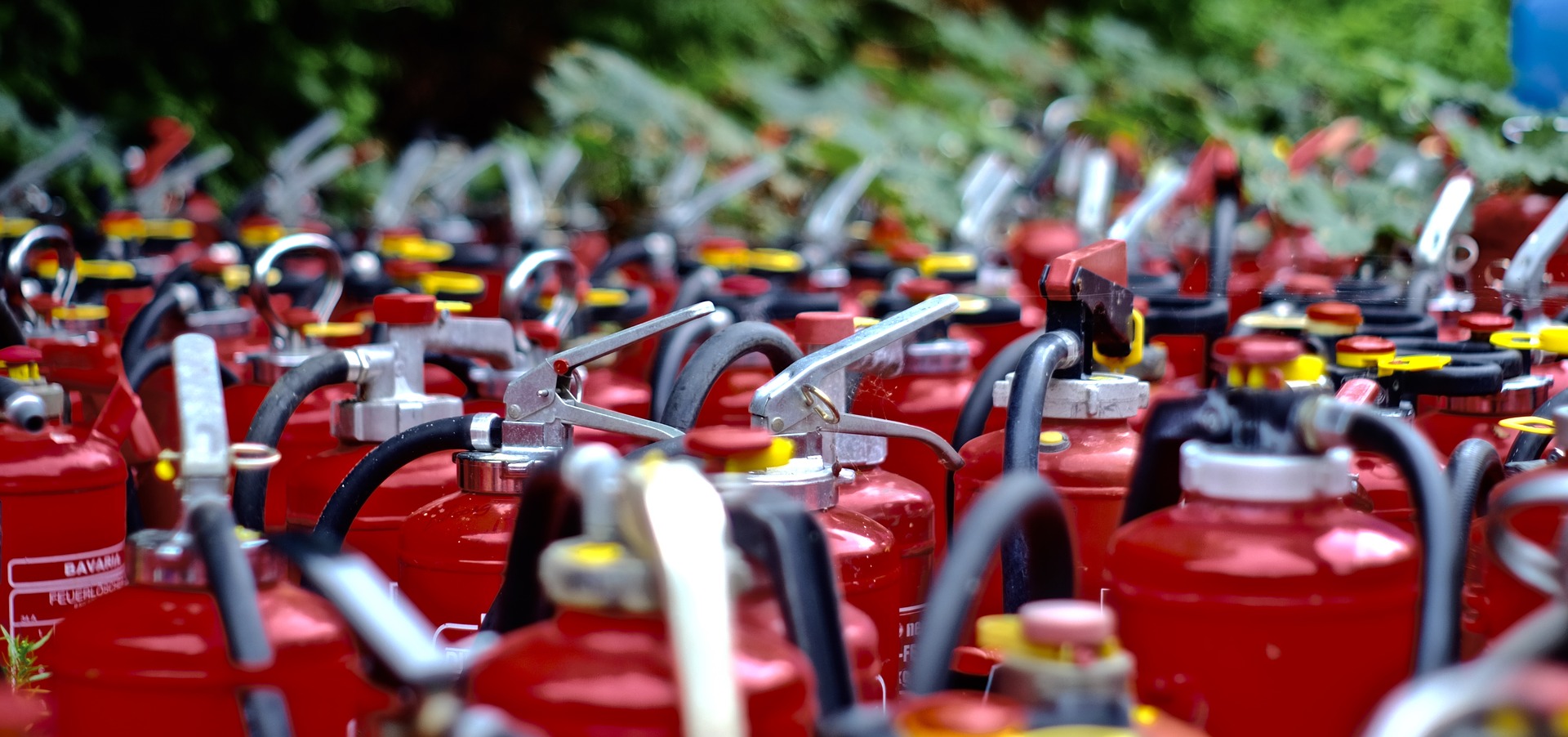
How CO2 Gaseous Fire Suppression Systems Work
Typically when we walk into a building and look up, we’ll see fire sprinklers on the ceiling in case of fire. We also see this system commonly used in movies. There’s usually a scene where the student pulls the fire alarm and the emergency sprinklers go off. But those sprinklers aren’t the only type of fire suppression system used to avoid disastrous fires.
Aside from water based sprinklers there are other fire extinguishing methods that can be used. Something everyone should always have in their home or business is a fire extinguisher. But, we all know those can be very messy since it uses a foaming agent to put out the fire. With carbon dioxide gas, fires can be put out with minimal damage to your home or business.
Today, we’re going to walk through CO2 gas fire suppression and how they can be a valuable safety precaution for any business and the benefits of using CO2 compared to other extinguishing agents.
About CO2 and Fire Suppression
CO2 is an inert gas, which means it doesn’t undergo any sort of chemical reaction when combined with other chemical substances. For this reason, CO2 has been a great option for fighting fires. In fact, it’s the only fire suppressing agent that’s been used since the start of the 1960s.
Compared to other agents used in fire suppression, carbon dioxide is a great solution because of the fact that there is little to no cleanup aside from any fire damage. Because the CO2 is stored as a gas, items in the environment won’t get wet or coated in any residues, thus potentially saving you money on things that could be easily damaged by other fire suppressing agents.
Additionally, CO2 fire suppression systems do a good job of containing any potential fire before it gets big enough to seriously damage your property. Sometimes damage from water sprinklers or foam from extinguishers can cost you more money than the actual fire depending on how extreme the fire is.
CO2 systems are approved for the suppression of fire hazards classified as Class A, B and C which are dependent on the type of fuel that is burning. Classes A, B and C consist of common combustibles (wood, paper, plastic), flammable liquids (solvents, paint, gas) and electrical equipment (wires, machinery, appliances).
How It Works
Unlike the individual fire extinguishers you have under the sink or in the cabinet, the CO2 gas system is a fixed system and set up to release the gas when it senses a fire or smoke.
With these systems, the cylinders are typically connected through a fixed gas pipe installation. Before the CO2 is discharged, the pneumatic timer runs for about 30 to 60 seconds, which is there as a safety precaution. It delays the release of CO2. This ensures that employees have time to evacuate before the CO2 is released.
The safety alarm will also go off to warn personnel that the CO2 will begin to flow shortly, again giving them the needed time to properly evacuate the area.
Once the CO2 is released and floods the area, the gas removes the oxygen in the room. A fire can’t live without oxygen and prevents any fires from growing. Some systems will also come with a pneumatic odorizer which releases a winter evergreen scent to help indicate that CO2 has been released into the environment.
Safety Hazards
CO2 fire suppression systems will typically be found in environments with very few personnel. The reason for this is due to the fact that CO2 is an inert gas, which makes it difficult to tell if there is an excess of CO2 in the air, which is the reason for the odorizer that comes with it.
Breathing in too much CO2 can cause rapid breathing, confusion, hallucinations and could cause someone to lose consciousness. Carbon dioxide will also remove the oxygen in the atmosphere which can cause people to suffocate.
For this reason, CO2 systems are typically found in areas like engine rooms, computer server farms, commercial shipping freights, and power plants for example.
Because there are potential asphyxiation hazards, CO2 fire suppression systems will come with safety devices to warn people when the system is actively working, like the pneumatic time, alarm and odorizer.
It is also very important to train all employees on how fire suppression systems work and how to properly evacuate from the building safely if needed.
When maintaining your CO2 fire suppression system, it’s vital that the system is regularly tested to ensure safety for all employees. This will include various tools to test CO2 levels in the area, gas sampling and oxygen levels. Making sure gas levels are being monitored is important as well as making sure the environment is safe for people to enter if required.
Wrapping It Up
Carbon dioxide as a fire suppressant can be an option for your business. CO2 is easily available for refills and is cost effective. If you work in an industry where fires are common or work with equipment that is highly flammable, then a CO2 fire suppression system may be worth the investment for a safe and efficient work environment.
Here at Air Source Industries, we work with various industries to provide them with the gases they need. From the local fire department to your local mom and pop diner, the CO2 we supply allows businesses to continue their day to day without interruptions or shortages.
If you’re looking for a reliable carbon dioxide supplier with next business day delivery, please contact us by giving us a call at (562) 426-4017 or request a free quote online. We are happy to help and are here to answer any questions.
Sources:
https://blog.koorsen.com/what-is-a-co2-fire-suppression-system-and-how-does-it-work
https://www.co2meter.com/blogs/news/11417829-co2-fire-supression-systems-inspection-safety

